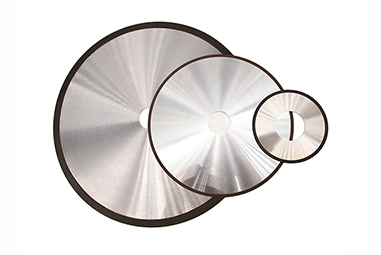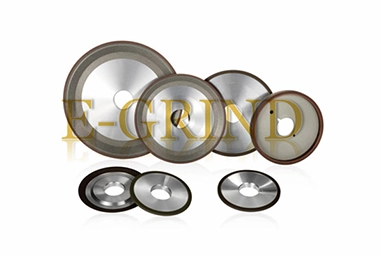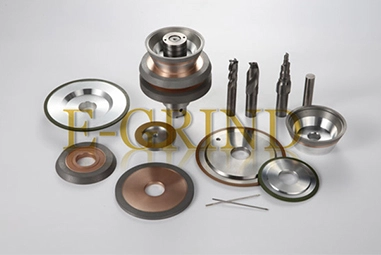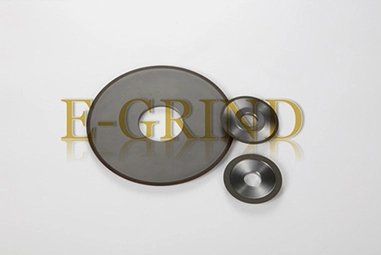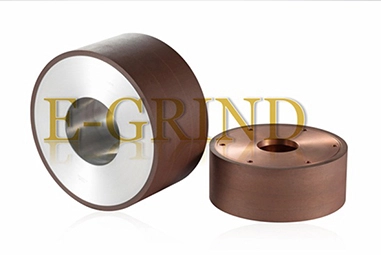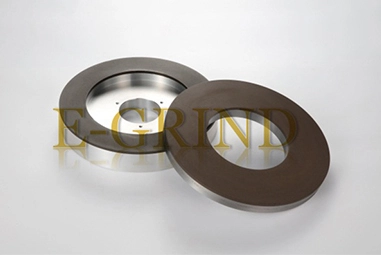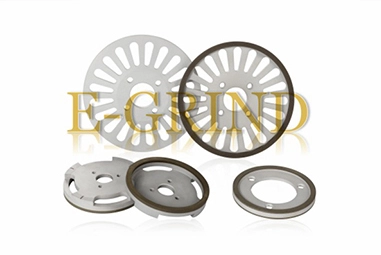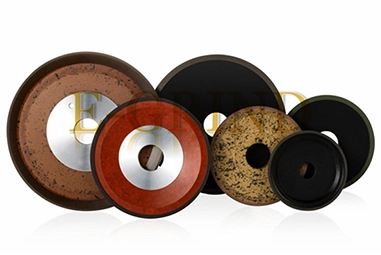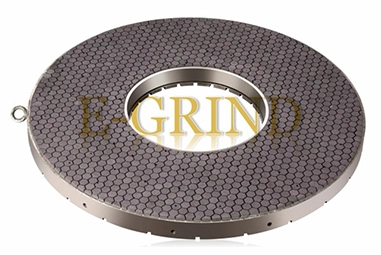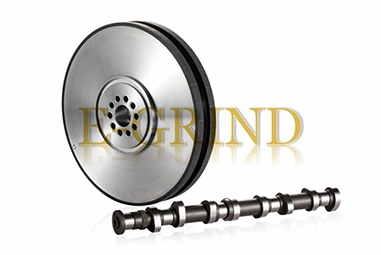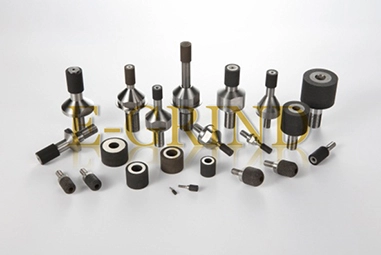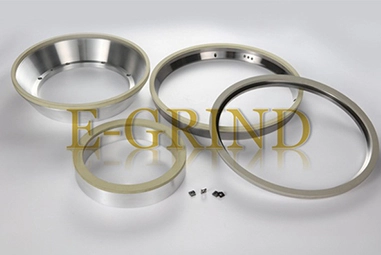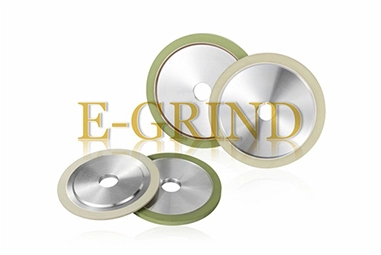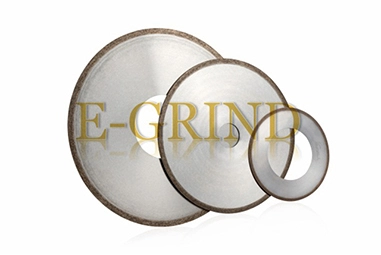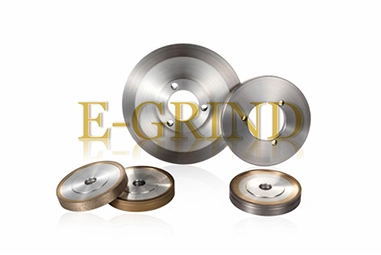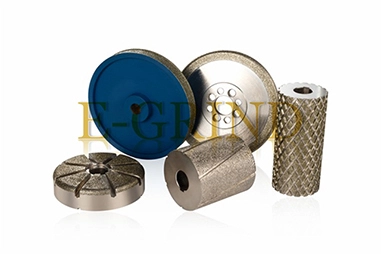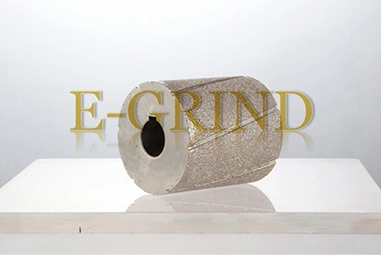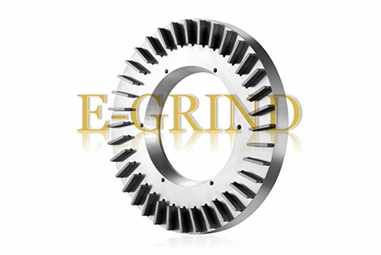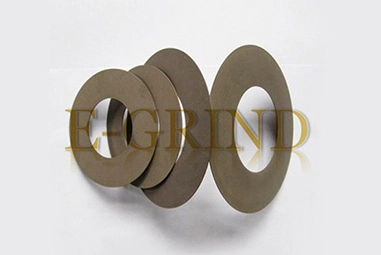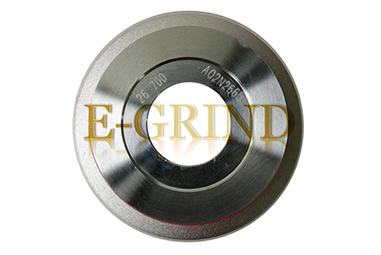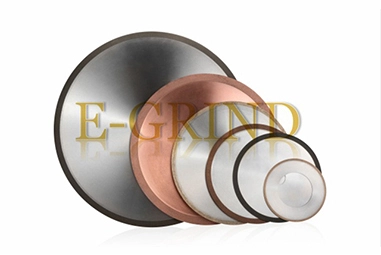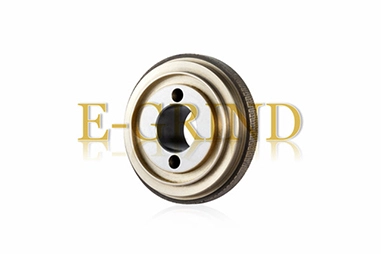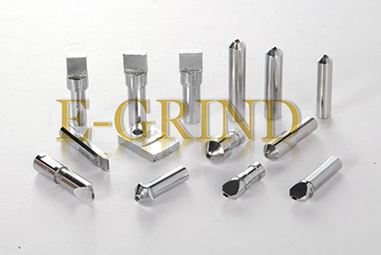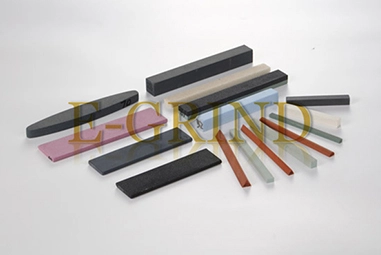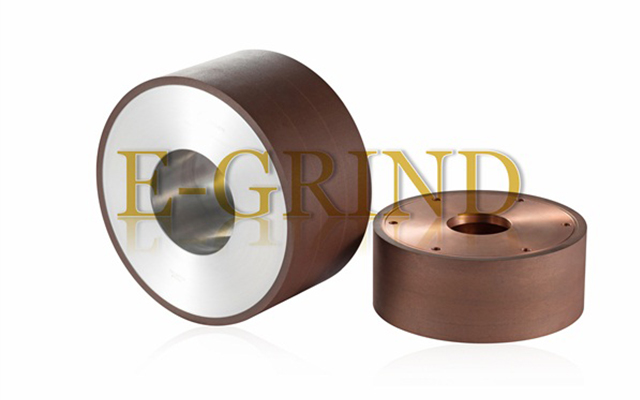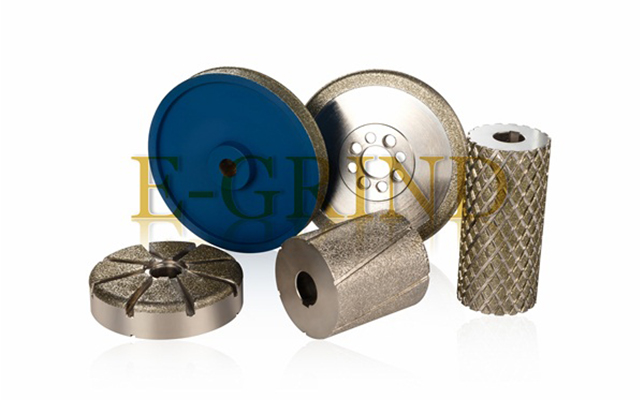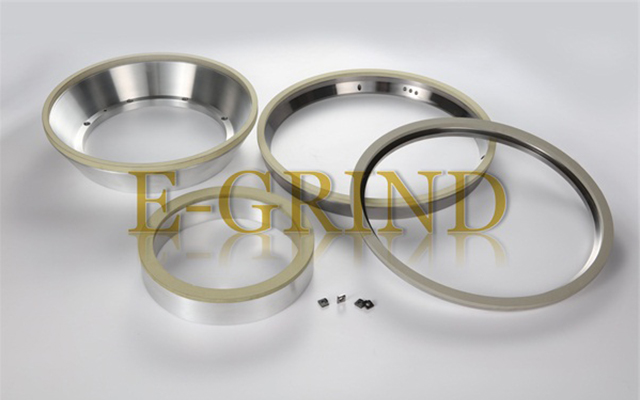In resin bond super abrasive wheels, the filler is also an indispensable part. Its main function is to improve the heat resistance, hardness, and strength of the bond, and the ultimate goal is to improve the durability of the grinding wheel. There are many kinds of fillers for resin bond diamond wheels. Cr2O3, ZnO, and Cu powder are common fillers for phenolic resin bonds; Except Cu powder, The commonly used fillers in polyimide binder are Zr, Co, CaCO3, etc when dry grinding; When wet grinding, quartz powder (SiO2), alumina powder (A12O3) and other ceramic materials can be added.
About common resin bond fillers
For resin bond diamond grinding wheel, metal powder and metal oxide powder, such as Cu and Cr2O3, are commonly used as fillers in bonds. The dry grinding effect is better when using Green Silicon Carbide(GC) and White Alumina(WA) as fillers, but it is not convenient for CBN recovery. The other used fillers in imported grinding wheels are electroplating MoS2 and some metal salts, such as BaSO4 and MgSO4. The amount of abrasive has an obvious influence on the grinding effect, especially in dry grinding.
The purpose of adding fillers is to improve the grinding performance and mechanical properties of abrasive tools. Under the premise of certain abrasive content, the filler also plays an insufficient part in the filling unit volume. The metal powder as filler can improve the hardness and strength of grinding wheels, which is conducive to the conduction and diffusion of grinding heat. However, too much filling will make it difficult for the bond to fall off, and the abrasive is not easy to get out of the edge. In serious cases, it will cause blockage, burn the workpiece, carbonize the diamond grits on the surface of the grinding wheel and increase the consumption; In addition to improving the strength, hardness, and thermal conductivity of grinding wheels, oxides can also be used as fillers to obtain polishing performance and improve the water absorption of grinding wheels.
In addition, in order to improve the grinding performance and mechanical properties of grinding wheels, some solid lubricant materials(like graphite) can be added appropriately, especially for dry grinding, which plays a particularly prominent role in reducing friction. Too much filler will reduce the strength of abrasive tools.
Characteristics and functions of the commonly used Fillers:
1. Cu
Cu has a high melting point (1 083 ℃) and good thermal conductivity. The instantaneous high temperature produced in the grinding process can be quickly transmitted to the metal body of the grinding wheels through Cu; The heat dissipation is fast, which reduces the local overheating phenomenon in the
grinding area and improves the heat resistance of the bond. The chemical adsorption between Cu and resin has good adhesion, and the thermal expansion coefficient of Cu is close to that of resin. The strength of the resin bond grinding wheel is greatly improved by using Cu as filler. Cu itself has good wear resistance. All the above properties are beneficial to improve the wear resistance of the grinding wheel. The tool life of the grinding wheel with Cu powder is several times longer than that without Cu powder. However, Cu is a tough material with high ductility, and the grinding wheel is easy to stick with workpiece chips if the amount of Cu is too much. The grinding ability is reduced Generally, the volume fraction is 15% ~ 20%.
Because of its excellent electrical conductivity, Cu powder (or mixed with graphite powder) is used as filler to make ECG grinding wheel. ECG grinding can shorten the processing time and improve work efficiency. This is also used in common resin abrasive tools.
2. Cr2O3 and ZnO
Cr2O3 is a dark green hexagonal crystal with a density of 5.1 ~ 5.2g/cm3 and a melting point of 2435 ℃. ZnO is a white hexagonal crystal or powder with a density of 5.6 g / cm3, a melting point of 1975 ℃, and an amphoteric compound. These
metal oxides have high melting points and mechanical properties, which can significantly improve the strength, hardness, and heat resistance of the grinding wheel. The test shows that the hardness and strength of the grinding wheel with Cr2O3 are slightly higher than those with ZnO, but the wear ratio is slightly
smaller. The effect of the two is very close, and they are often mixed used. Generally, Cr2O3 ∶ ZnO = 1 ∶ 1 ~ 2 ∶ 1. The former is used for external grinding, internal grinding, and edge sharpening, while the latter is
used for dry grinding and fine grinding.
Fe2O3 can also improve strength and hardness, but the effect is obviously lower than that of ZnO and Cr2O3. Fe2O3 is generally used as a transition layer.
3. Other fillers
The grinding performance can be improved by adding quartz powder, aluminum oxide powder, WA, GC, and other abrasive fillers.
Table
The function of various fillers
Filler | Density g/cm3 | Melting Point/℃ | Main function |
Cu | 8.93 | 1083 | Improve the bonding strength, electrical conductivity, and heat dissipation of the grinding wheel |
Al | 2.7 | 660 | Compared with Cu, it can reduce weight, but has poor heat resistance |
Ag | 10.5 | 960 | The conductivity is better than that of Cu, and can be used for ECG grinding wheels but more costly |
Cr2O3 | 5.2 | 2435 | Improve the bonding strength, hardness, and heat resistance. With polishing performance |
ZnO | 5.6 | 1975 | |
Fe2O3 | 5.24 | 1565 | |
Zr | 6.49 | 1852 | The melting point and hardness are higher than that of Cu, and the thermal conductivity is better than that of oxide, which can improve the wear resistance, hardness, and strength of the grinding wheel |
Co | 8.9 | 1492 | |
SiO2 | 2.65 | 1710 | Improve the heat resistance and hardness of the grinding wheel |
Al2O3 | 3.96 | 1850 | |
SiC | 3.2 | 1627 | Reduce the blocking of the grinding wheel and play the role of auxiliary grinding. |


